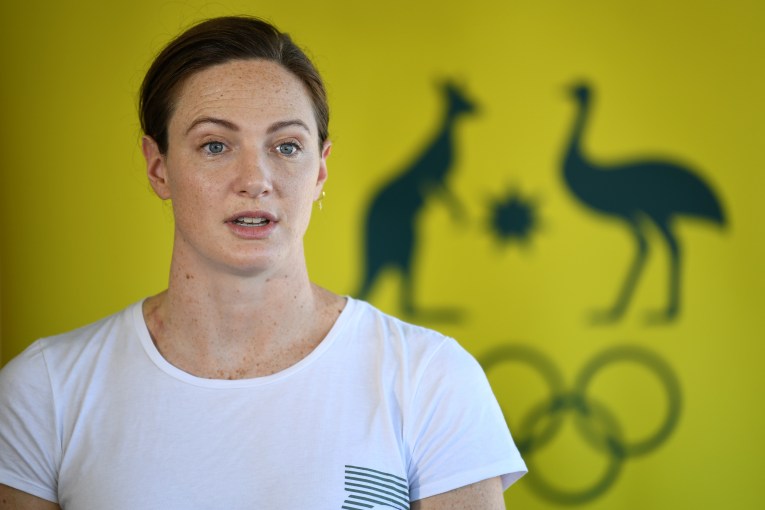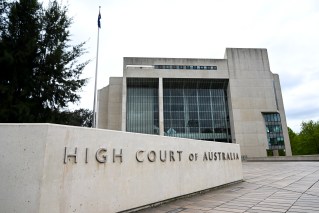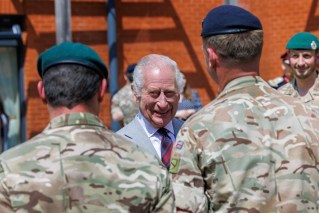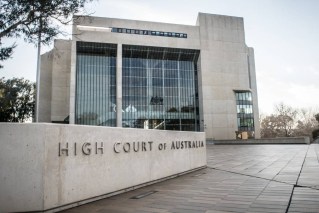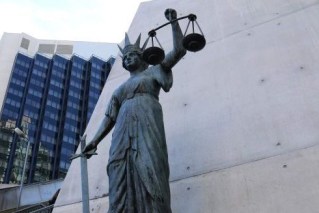‘Barrelling towards catastrophe’: Major bushfire warnings across east coast as heatwave takes control
Fire danger zones are spreading across the east coast as extreme heat closes schools and threatens Australians young and old, with the nation “at the precipice”.

'Catastrophic' fire warnings have been placed on five separate zones down the Australian east coast. S. (AAP Image/DALE APPLETON for DELWP Gippsland)
A spring heatwave has large parts of NSW and eastern Victoria sweltering under maximum temperatures 10 to 15 degrees above the September average.
Extreme heat is forecast to drive north into Queensland, bringing fire danger to southern parts of the state and into the vast outback Channel Country on Thursday and Friday.
Authorities have declared an extreme fire danger for the Greater Hunter and Greater Sydney regions on Wednesday, with temperatures in the mid-30s and gusty winds expected.
A catastrophic fire danger warning is also current for the far south coast of NSW as residents fear a recurrence of the state’s worst black summer of bushfires in 2019-20.
The unseasonably hot and dry conditions are being felt across southern Australia, with temperatures peaking at 8-16C above average across much of South Australia, NSW and Victoria.
The Bureau of Meteorology on Tuesday officially declared an El Nino weather event, which brings hot, dry weather and increases the risk of heat exhaustion and bushfires.
Extreme heat is one of the most direct and measurable shocks from climate change and one of the deadliest, according to the independent Climate Council.
A report released by the council on Wednesday found existing government targets leave Australia “barrelling towards catastrophe”.
Already, more Australians have died as a result of extreme heat than any other natural hazard, they said.
“Right now, we stand at the precipice. Once we cross those tipping points, we cannot return,” co-author Lesley Hughes said.
Queensland authorities are confident the state is well prepared for bushfires as warm, dry and windy conditions bring an early start to the season.
Dozens of fires were burning across the state on Tuesday but all were contained, with crews aiming to beat them back as much as possible before soaring temperatures expected on Thursday.
The main blazes continued to be at Beerwah on the Sunshine Coast and south of Townsville, along with fires near Bundaberg and on the Darling Downs.
Police are investigating whether the Beerwah blaze was deliberately lit before burning through more than 170 hectares.
Fire conditions are worsening this week as heatwave conditions make their way across southern Australia, prompting total fire bans in parts of NSW before heading north later in the week.
Queensland’s fire chief said its fire season had started early in southern parts, and the risk had spread into central and northern areas as the state was “progressively drying out”.
“We will see on Thursday many areas will be in the high and some areas in the extreme fire danger rating,” Queensland Fire and Emergency Services Commissioner Greg Leach told reporters.
He said authorities were yet to decide on total fire bans.
“It’ll depend really what the ultimate weather conditions are on Thursday,” Mr Leach said.
High temperatures and lots of dry vegetation were factors but “a lot of these fires we’re seeing at the moment are wind-driven fires”.
Speaking on Tuesday before the Bureau of Meteorology formally declared an El Nino event, Mr Leach said the decision would not affect Queensland’s bushfire preparation.
The commissioner and Emergency Services Minister Mark Ryan also said they were confident the state had enough volunteer firefighters following reports that thousands of volunteers had quit the state’s Rural Fire Service in recent years.
Mr Leach said the Rural Fire Service had 26,500 volunteers, which was down from 35,000 five years ago, but this was due to a “significant refresh of our data”.
The smaller figure came after a review uncovered a number of volunteers who were no longer active with their brigades, had moved away or died.
He said the 26,500 was “a more accurate reflection of our operational strength” and he and Mr Ryan were confident that was enough for what is expected to be a challenging season.
Mr Ryan also pointed to the higher number of hazard reduction burns carried out this year by the QFES and the Queensland Parks and Wildlife Service.
Extreme heat is forecast to drive north into Queensland, bringing fire danger to southern parts of the state and into the vast outback Channel Country on Thursday and Friday.
Authorities have declared an extreme fire danger for the Greater Hunter and Greater Sydney regions on Wednesday, with temperatures in the mid-30s and gusty winds expected.
A catastrophic fire danger warning is also current for the far south coast of NSW as residents fear a recurrence of the state’s worst black summer of bushfires in 2019/20.
Local Government Minister Kristy McBain, who represents the Eden-Monaro electorate heavily impacted by 2019/20 bushfires, said communities were fearful of what was to come this summer.
Ms McBain understood resident’s frustrations with the lack of action on land management and mitigation in the lead up to this bushfire season.
“The frustration stems not with our local Rural Fire Service, who are a largely volunteer group doing as much work as they possibly can when weather permits,” she told ABC Radio.
“It’s a lack of investment in paid workforces to make sure that land management is a priority and that’s across national parks, state forests … I think that would be the frustration that land management is still not a priority.
“That doesn’t come down to the last couple of months, that’s the last three years that we should have been preparing.”
The unseasonably hot and dry conditions are being felt across southern Australia, with temperatures peaking at 8C-16C above average across much of South Australia, NSW and Victoria.
The Bureau of Meteorology on Tuesday officially declared an El Nino weather event, which brings hot, dry weather and increases the risk of heat exhaustion and bushfires.
Ms McBain said state and federal governments were working together on fire mitigation and resilience strategies.
“We also see more communities now making sure that they are prepared with their own fire plans, which I think is a very positive thing,” she said.
Extreme heat is one of the most direct and measurable shocks from climate change and one of the deadliest, according to the independent Climate Council.
A report released by the council on Wednesday found existing government targets leave Australia “barrelling towards catastrophe”.
Already, more Australians have died as a result of extreme heat than any other natural hazard, they said.
“Right now, we stand at the precipice. Once we cross those tipping points, we cannot return,” co-author Lesley Hughes said.
Meanwhile, emissions from transport and heavy industry continue to rise, putting Australia on track for even more harmful levels of global warming, the Climate Council modelling shows.
Up to 250,000 Australian properties are at risk of coastal inundation under a rise of well over 2C by the end of the century.
Marine ecosystems would collapse and irreversible change in rainfall patterns globally would destroy food production.
“So it really doesn’t get much more urgent than this – we’ve got to aim higher and go faster,” Professor Hughes said.
